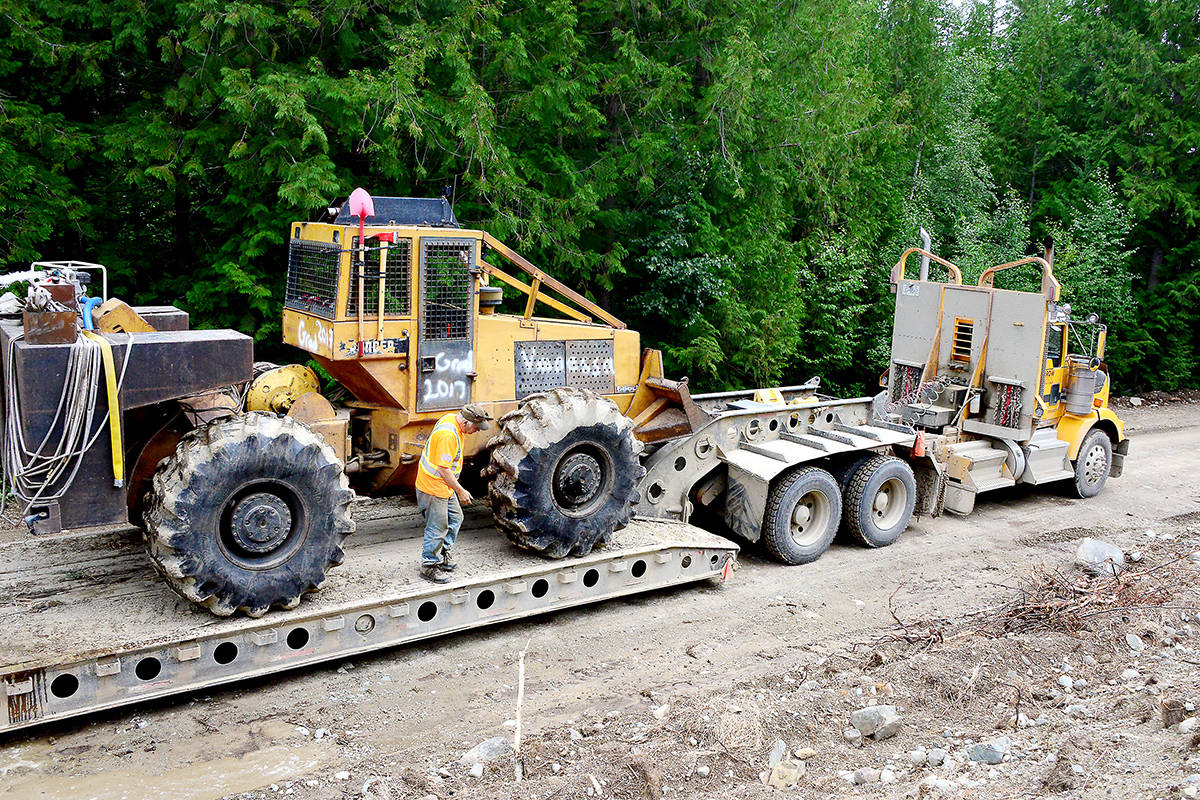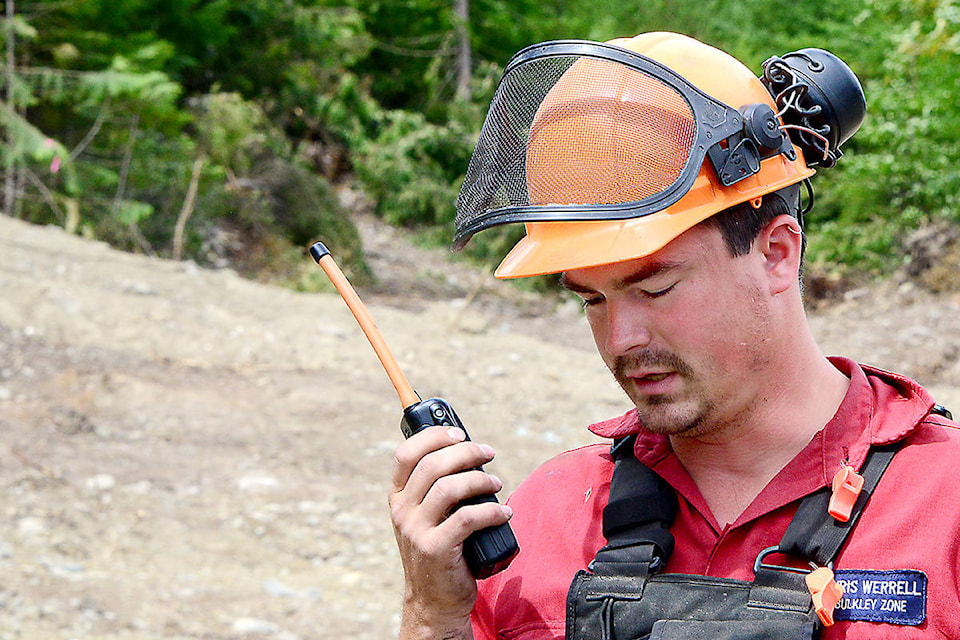“We’re not writing this fire off yet. It’s early in the season and the fire indices are still high.”
That was the verdict of Chris Werrell, the division superintendent in charge of the Thuya Road fire, speaking last Saturday.
“We had a lot of local equipment on the fire. The local contractors have been really good to work with. We got a little spoiled,” he added.
The fire technician from Houston, B.C., took over as fire boss on Tuesday of last week.
During that time he saw heavy rains (up to 30 mm measured) change what had been a roaring tiger into a purring pussy-cat.
The fire had been working its way downhill, threatening to cut the power-line to the upper North Thompson Valley as well as Highway 5
With the cooler and damper conditions, most of the heavy equipment on the Thuya Road fire was being phased out.
Only one water tender and one skidder with a water tank remained.
During their time on the fire, the heavy equipment operators had been able to put cat guard around much of the fire.
The day before, ground crews had succeeded in putting a wet-line guard on the remainder of the perimeter (meaning they had laid hose and wet the ground around the fire but not necessarily dug a physical fire guard).
As of Saturday, four crews were at work cold-trailing in from the perimeter one hose length (about 100 feet or 30 metres).
That meant they were using their senses of smell, sight and touch to find hot spots and then used hand tools and water to put them out.
“It’s steep terrain and the crews have to exercise caution,” the fire boss observed.
One crew was from Boulder Mountain Contracting of Barriere, one was a Forest Service crew from Kamloops, the third was a private contract crew from Kamloops, and the fourth was from New Brunswick.
Three of the four crews were to time out on Monday.
Weather helps firefighters
With cooler and wetter weather last week, fire crews were able to get a handle on the Thuya Road fire and the Dunn Lake fire.
Several evacuation alerts were rescinded on Monday and the evacuation orders were being re-evaluated.
As of Monday, the Dunn Lake Fire was estimated at 3,035 ha. Its status was still “out of control” but it was 80 per cent contained.
Crews were continuing to wet down hot spots on the perimeter, with a focus on the northern and eastern flanks, while supporting CN crews working of flare-ups along the rail corridor as needed.
The Thuya Road fire was estimated at 556 ha as of Monday. Its status was “being held” and it was 100 per cent contained.
Crews on the Thuya Road fire were extinguishing hot spots that had been identified during an infrared scan the previous night. They were also assessing and falling dangerous trees.
Total resources allocated to the two fires in the Little Fort fire complex was put at 269 firefighting personnel, five helicopters and six pieces of heavy equipment, plus structural protection units (regular fire departments) and air tankers, as needed.
The Thuya Road fire is located southwest of Little Fort while the Dunn Lake fire is northeast.

